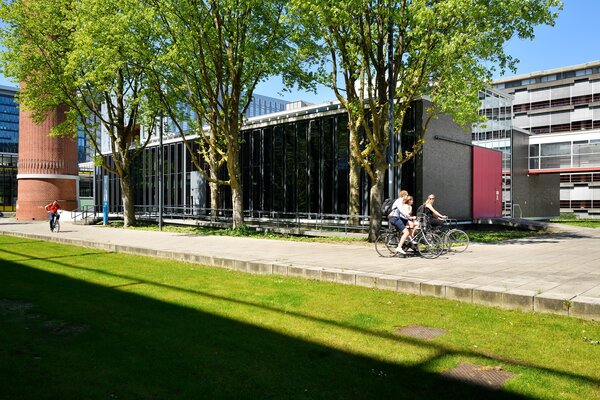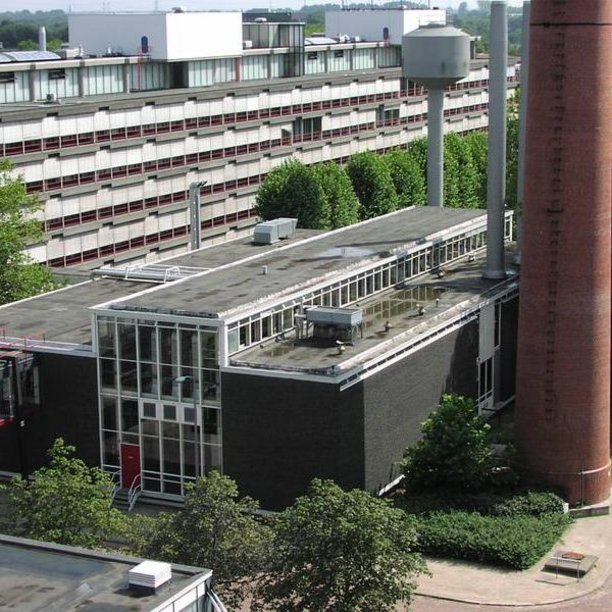Ceres is the home base for the Institute for Complex Molecular Systems (ICMS). It provides its employees with a pleasant, light working area. The aim of the institute is to get a grip on molecular self-assembly. There are also activities taking place of the Eindhoven Multiscale Institute and the Eindhoven Polymer Laboratories.
Original building period (Ketelhuis): 1958 – 1963 (Design: ir. S.J. Van Embden)
Ceres has a prominent place along the Groene Loper and has a characteristic identity. Until 2006 this former boilerhouse provided TU/e with hot water and heating. The water tower and the 70-meter-high brick chimney next to the building keep the memory of this function alive. In the course of time the technical installations have become superfluous due to developments in the area of climate control, and the boilerhouse had largely fallen into disuse. Heat and cooling are now generated by the ATES installation (aquifer thermal energy storage), to which all TU/e buildings on the site are connected. In summer cold water from an underground pipe system is pumped up for cooling. In winter the reverse takes place by means of stored hot water
Renovation period: 2009 - 2012 (Design: diederendirrix architecten)
The boilerhouse has to be converted from a closed, functionally equipped machinery building into a modern, high-grade office and education building, while retaining its architectural qualities. The historic and industrial nature of the building has remained mostly intact, as has the 70-meter-high brick chimney next to the building. The existing building was characterized by a closed, black façade of enameled bricks with an elongated rooflight lengthwise along the building. At the rooflight in the end walls there are glass fronts extending across the whole height of the building, allowing lots of daylight inside. On the east side there is a red sliding door accessible via a ramp which makes it possible to transport voluminous installations into and out of the building. Inside there is still a heavy-duty standby generator, which proved impossible to move. In order to enhance the daylight illumination in the building, the southern brick façade was replaced by a climate-controled façade. Through the use of dark-tinted glazing the massive look of the façade was preserved. In addition, an extra floor was inserted across a large part of the surface so as to expand the usable area.

